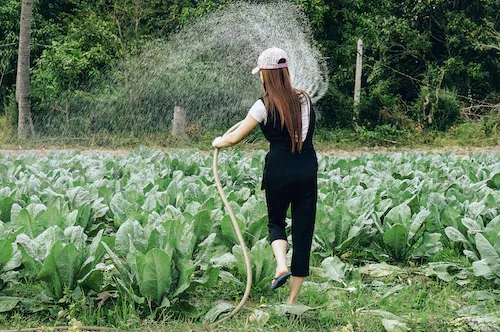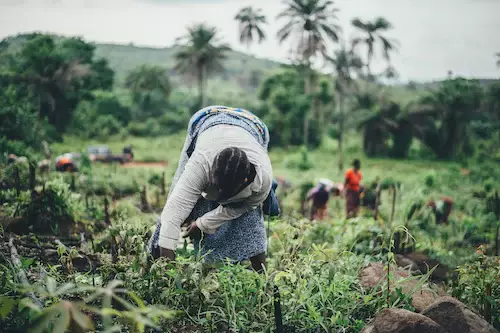Can You Farm Successfully on 2 Acres - Is It Enough?
Do you dream of becoming a small-scale farmer but have limited land? Explore the possibilities of farming successfully on two acres or fewer. Learn about the tools, techniques, and types of crops that can help you maximize the potential of your small plot of land.
You can farm successfully on 2 acres. It is enough to create a productive and profitable small farm. You just have to plan and manage resources effectively. With the proper strategies and techniques, you can grow a variety of crops and even raise animals in a space this size.
Make the most of the land to make your farm a success by learning tips and tricks to maximize your yield and minimize risk. Let's find out the possibilities for running a profitable small farm on only two acres of land.
Summary
- Your 2-acre land is enough to farm successfully with the proper strategies and techniques.
- Practicing soil conservation and planting cover crops can help prevent erosion on your land.
- Choosing and rotating crops to keep the nutrients in the soil is a great way to keep the land healthy.

On this page:
Farming On 2 Acres of Land
Farming on 2 acres of land is possible, but it requires careful planning and management. With the right strategies and dedication, a small-scale farm can be extremely successful.
- The first step is to decide what type of farm to pursue. To determine what kind of crop or cattle would be appropriate for the land, it is crucial to evaluate the terrain, climate, and available resources.
- A strategy for irrigation, fencing, and water should then be developed.
- Once the type of farming is determined, a crop plan should be created. This plan should include what type of crops to grow and how often to rotate them.
- The use of fertilizers, herbicides, and pesticides should also be considered.
- Finding out how many animals can be supported on two acres is crucial for cattle.
- It is also vital to consider how to provide adequate housing, feed, and water for the animals.
- Finally, a marketing plan should be created. This plan should include ways to promote the farm and sell the products, such as through farmers' markets, online stores, and local stores.
Techniques to Maximize Farming
Use the following techniques to maximize the potential of your small plot of land and the benefits of your yield.
1. Choose the right crops for the climate and soil.
Choosing the right crops for 2 acres of land depends on the climate and soil of the area. Different crops thrive in different climates and soils, so it's important to consider both when selecting crops.
The climate of the land will determine what time of year the crops should be planted as well as which types of crops will fare best. Additionally, the soil type should be considered, as some crops require specific soil types to grow healthily and produce a good yield.
2. Fertilize the soil with organic or chemical fertilizer.
Fertilizing the soil of a two-acre parcel of land is a great way to improve the fertility of the soil and the quality of the crops grown on the land. For organic fertilizer, compost and manure can be added to the soil to provide essential nutrients. Chemical fertilizer can also be used, with fertilizer formulas tailored to the specific crop being planted.
If using chemical fertilizer, it is important to follow the instructions closely and apply it at the correct rate. Overall, it is important to remember that proper fertilization is key to a productive and healthy crop.
3. Rotate crops to keep nutrients in the soil.
Different crops require different amounts of nutrients, and by rotating them, the soil can remain fertile as nutrients are replenished. This prevents the soil from becoming depleted, which can result in less healthy plants and an overall decrease in yield.
Additionally, rotating crops can help reduce the chance of disease, as different plants are less likely to contract the same viruses or pests. This can also save time and money, as fewer pesticides or treatments may be needed.
4. Practice soil conservation techniques to reduce erosion.
This can be done by tilling the soil at a shallow depth, planting cover crops, and mulching. Cover crops, such as clover, help to keep the soil in place and reduce the amount of runoff. Additionally, mulching can help prevent soil erosion by preventing the wind from blowing the soil away. Tilling the soil at a shallow depth can also help reduce runoff and keep the soil in place.

5. Plant cover crops to protect the soil and control weeds.
Cover crops, also known as green manure, are planted and grown between rows of cash crops to provide protection from wind and water erosion, reduce the number of weeds, and improve soil quality.
Cover crops can be planted in the fall, allowing the plant to grow and develop a deep root system that holds the soil in place and captures precious nitrogen and other essential nutrients for your cash crops. Additionally, cover crops can be used as a form of organic weed control, as their dense growth can help prevent weeds from germinating and spreading.
6. Irrigate the land correctly to ensure efficient water use.
When irrigating two acres of land, it is important to ensure that efficient water use is practiced. This can be done by choosing the most efficient irrigation system available, such as a drip system, that can deliver water directly to the plants' roots.
The irrigation system should be checked regularly to ensure that it is working properly and that no water is being wasted. By using an appropriate amount of water, it is possible to effectively irrigate two acres of land without wasting water or causing water runoff.
Additionally, it is important to use mulch around plants to help retain water and reduce evaporation. Finally, water should be applied in the early morning or late evening, when temperatures are cooler and evaporation is lower.
7. Use raised beds or row planting to maximize space.
Raised beds can be used to maximize the use of the land by creating a vertical growing space, which can be used to grow more plants and crops in a smaller area. Row planting is also a great way to maximize space, as it allows crops to be planted in a straight line, which allows for more efficient use of the space.
8. Store and preserve crops for long-term use.
By properly harvesting and storing crops, a farmer can ensure that their products will remain fresh and usable for several months or even years.
Techniques such as root-cellaring, canning, and drying can be used to preserve fruits and vegetables, and whole grains and legumes can be stored in cool, dry environments. Proper storage will also help to prevent the growth of mold, insects, and bacteria, making sure your crops will remain safe for long-term use.

9. Take advantage of any available grants or subsidies.
Taking advantage of grants and subsidies on two acres of land can be a great way to supplement your income and help make your land more profitable. Grants and subsidies can help you purchase equipment, materials, and other goods needed to run a successful operation. They can also help you with labor costs as well as provide funds to help with marketing, research, and other areas.
Additionally, grants and subsidies can help you with land management, such as creating a buffer zone between your land and neighboring properties or developing a drainage system. With the right grants and subsidies, you can make your two-acre plot of land a profitable and sustainable enterprise.



